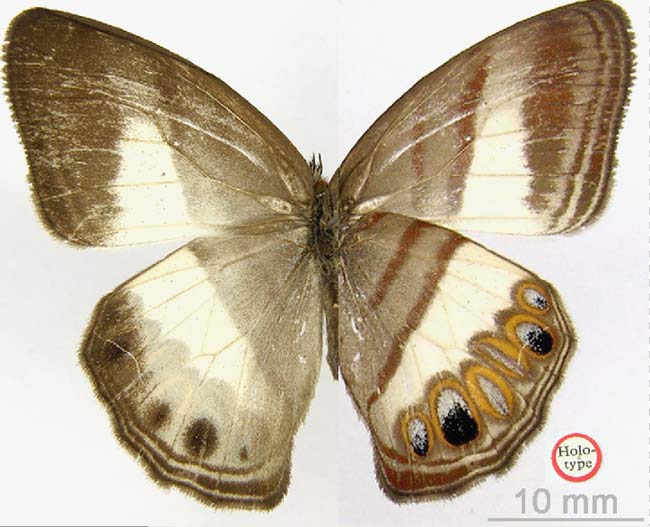New Butterfly Discovered with Mustache Disguise

A mustache on a butterfly has tipped off curators at the Natural History Museum in London that a specimen in their collection for 90 years actually belongs to a new species. A curator found the disguised insect, initially collected from the dry Magdalena valleys of Colombia, among the 3 million butterfly specimens at the museum where it had lain undiscovered. Blanca Huertas compared the mustachioed specimen with a recently found wild specimen, allowing her to identify the older specimen as Splendeuptychia ackeryi, or Magdalena valley ringlet, whose distinguishing feature is unusually hairy mouthparts. (The name ackeryi is dedicated to Phil Ackery, the former collection manager of the butterfly collections at the museum.) "We have almost 9 million butterflies and moths in our collections, a comprehensive example of the Earth's diversity," Huertas said. "But there are many new species still waiting to be discovered, both in museum collections and in the field." Huertas discovered the new species in the wild when she travelled, with two colleagues, on an expedition to a remote mountain in Colombia in 2005. The entomologists did not realize, however, that the butterfly they had seen in Colombia had not been named and described until they returned to the England and studied the specimens in the Museum's collections, dating from 1920. Butterflies are a diverse group of insects with almost 20,000 known species, 40 percent of which are in South America, Huertas said. The description of the new butterfly is published in the latest issue of the journal Zootaxa. The expedition to Colombia was supported by the BP Conservation Programme, BirdLife International, Conservation International, Flora & Fauna International, Wildlife Conservation Society, Rio Tinto plc, Duke of Edinburgh, the Royal Geographical Society, Fundación ProAves and many other Colombian institutions.
- Gallery: Colorful Butterflies
- Butterflies: Images and Information
- Butterflies Remember Caterpillar Days
Get the world’s most fascinating discoveries delivered straight to your inbox.



